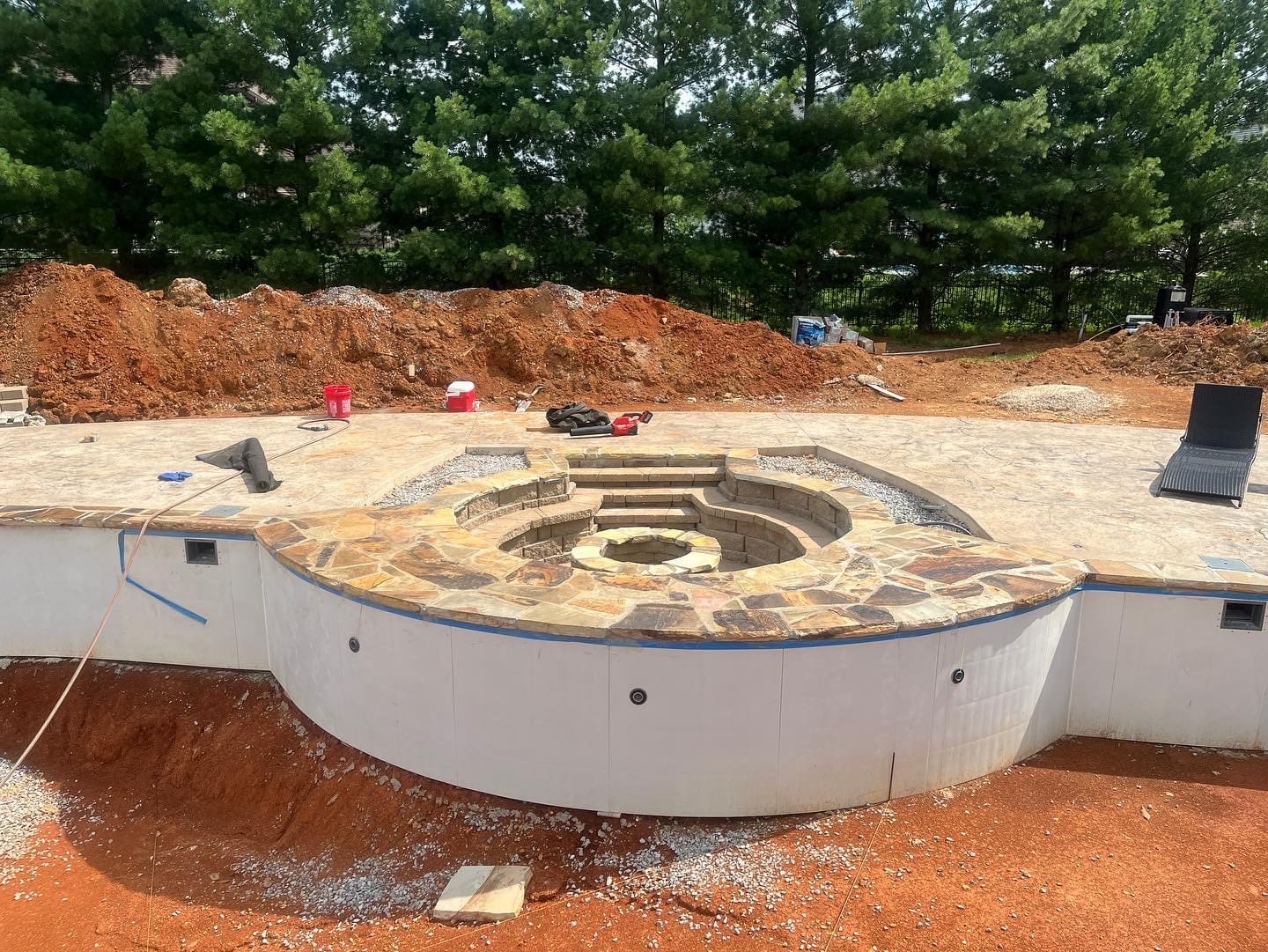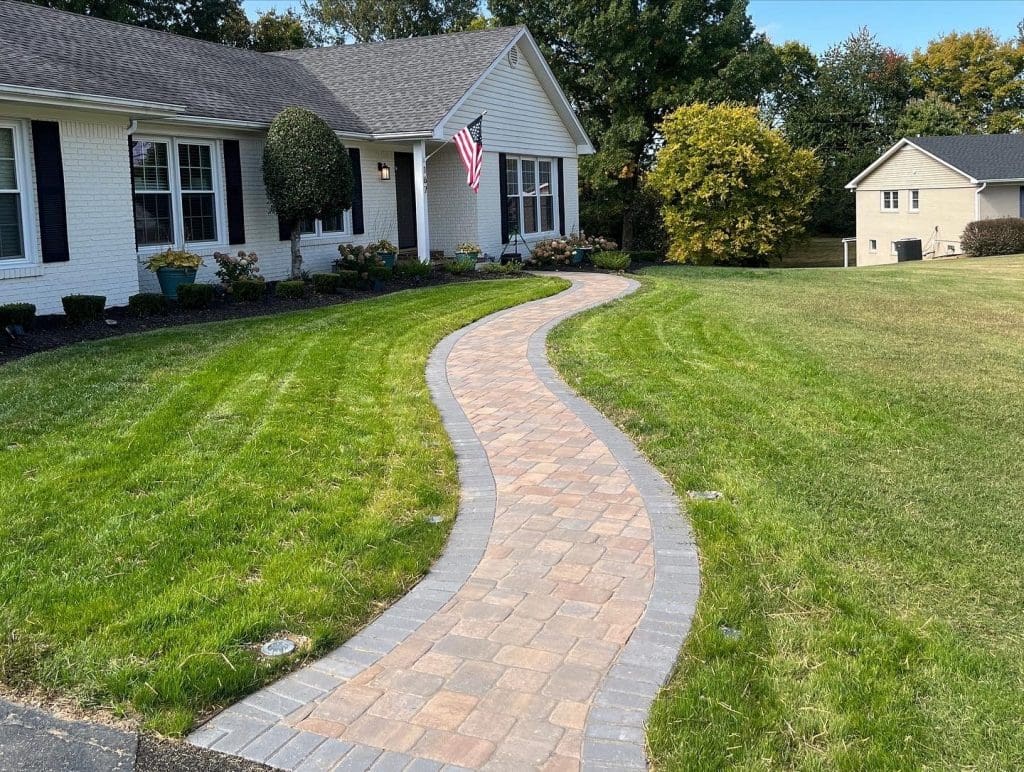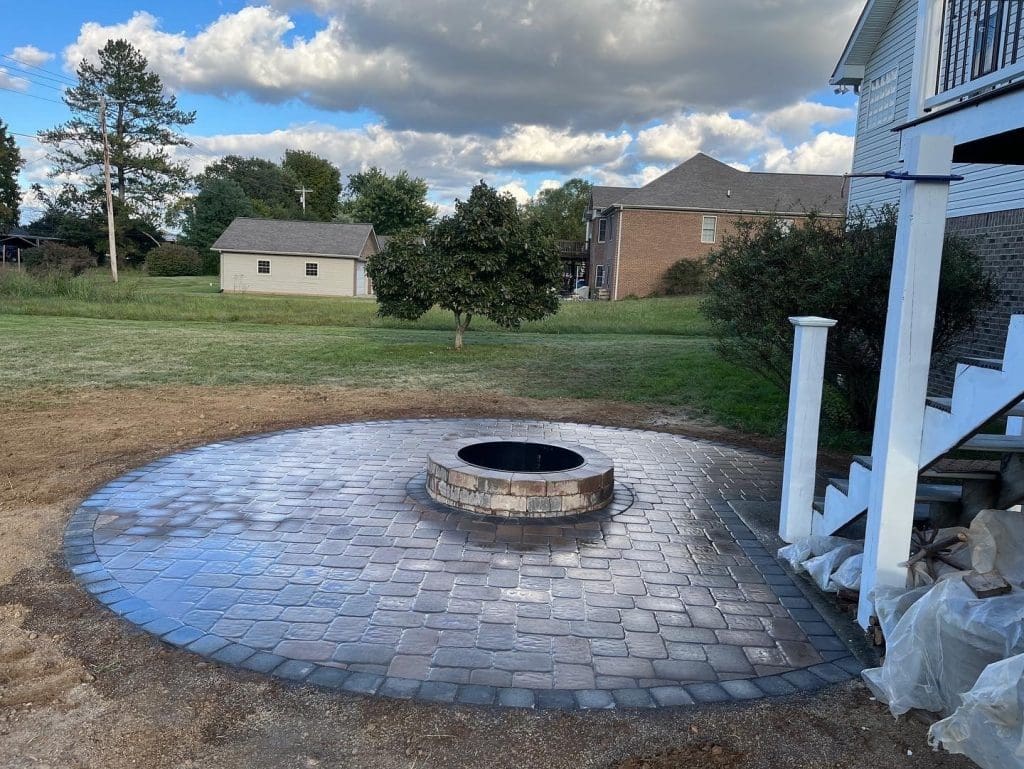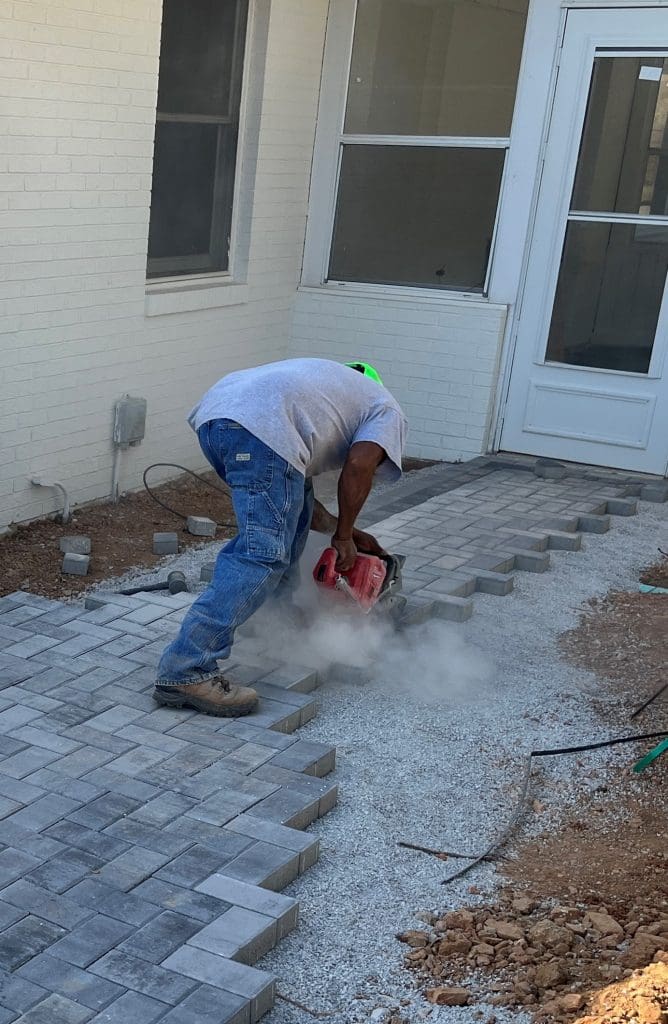
You typically hear about battery-power equipment being implemented in landscape maintenance operations, but Alfredo’s Lawn and Landscape, based in Austin, Kentucky, has been able to incorporate some battery-powered tools in their hardscaping jobs.
Alfredo Aubone, owner of Alfredo’s Lawn and Landscape, says they’ve been using battery-powered blowers for a long time because they’re easy and lightweight. These blowers have a low setting that he uses to blow poly sand off the surface of pavers because backpack blowers ended up blowing too hard and removing sand from the joint.
“We use it to blow the release powder off of it because if you use the high setting, then you blow a bunch of dust and trash that gets up in your concrete,” Aubone says.

During mid-summer, he added a Milwaukee M18 Fuel 9” cut-off saw to his hardscaping tools after first hearing about it on a Facebook forum.
“We went with Milwaukee because all of our shop tools, our drills and everything like that are Milwaukee, so it’s nice to have the interchangeable batteries,” Aubone says.
He says this new battery-powered saw has been beneficial in a number of ways, but it doesn’t replace his gas saw.
“A gas saw is still definitely necessary, but the main reason I bought the saw in the first place was for doing detailed cuts like curbs and things like that,” Aubone says. “The battery saw is a nine-inch saw versus your gas saw is a 14, so the smaller blade allows you to cut a tighter radius and it’s more lightweight and easier to handle. You can do a better job on detailed cuts without having to use, say a hand grinder.”
Benefits of Battery-Powered Saws
Some of the pros Aubone has experienced since adding the new saw include reduced noise and emissions. Aubone says his customers have noticed the work is a lot quieter when they’re in a residential area. He says it also allows them to start cutting an hour earlier.
“If we’re not right up against the house, we can usually still get our cuts in pretty early in the morning where a gas saw is just super loud,” Aubone says.
Aubone also likes being able to turn the saw off and on with ease rather than having to leave it idling. He says with the last three patios they’ve installed, they haven’t had to touch their gas saw as they’ve only used their electric table saw and the battery saw.

He says one of his main issues with the gas saw was the carburetor getting out of adjustment or getting gummed up. While there’s still wear and tear for the battery saw, Aubone says there are fewer parts that can fail.
He says the saw is particularly beneficial if you’re doing detailed work such as inlays and cutting for soldier course.
“I think every hardscaper could benefit from having this on their truck,” Aubone says. “But to what degree they use it is going to depend on their preference and what kind of work they’re doing.”
He says there is less operator fatigue because the battery saw is lighter.
“The weight difference makes a big difference,” Aubone says. “As far as the fatigue of you’re cutting pavers all day long for 10-12 hours, the way that you feel at the end of the day using one versus the other big difference.”
He also likes that they can swap the batteries out with a number of other tools they have.
“I have a flashlight that runs off the same battery, my grease gun for the skid steer and excavator, all of it is interchangeable,” Aubone says. “So that helps because the battery is the most expensive part.”
Drawbacks of Battery-Powered Saws
Aubone says one con is the runtime of the saw, but if you have a bunch of batteries, it is not a huge drawback. Initially, he found himself waiting for a battery to charge so he could finish a job, but he says he was more frustrated with himself for not having enough batteries.

“It’s the same thing with a gas saw, you’ve got to make sure you have enough gas,” Aubone says.
He says if you’re cutting individual pavers, you can probably last 30-45 minutes on a single battery. If you cut the pavers once they’re already laid on the ground, it puts more of a load on the saw, decreasing the runtime.
He advises if you have a 300-foot-long sidewalk and you want to cut it all at once, just use a gas saw. If you’re cutting a curve or certain sections, the battery-powered saw works well.
Aubone also notes that for anything thicker than three inches, the saw will not be able to cut all the way through in one cut. The battery saw isn’t the best for cutting retaining wall block. It is better for cutting coping and pavers.

